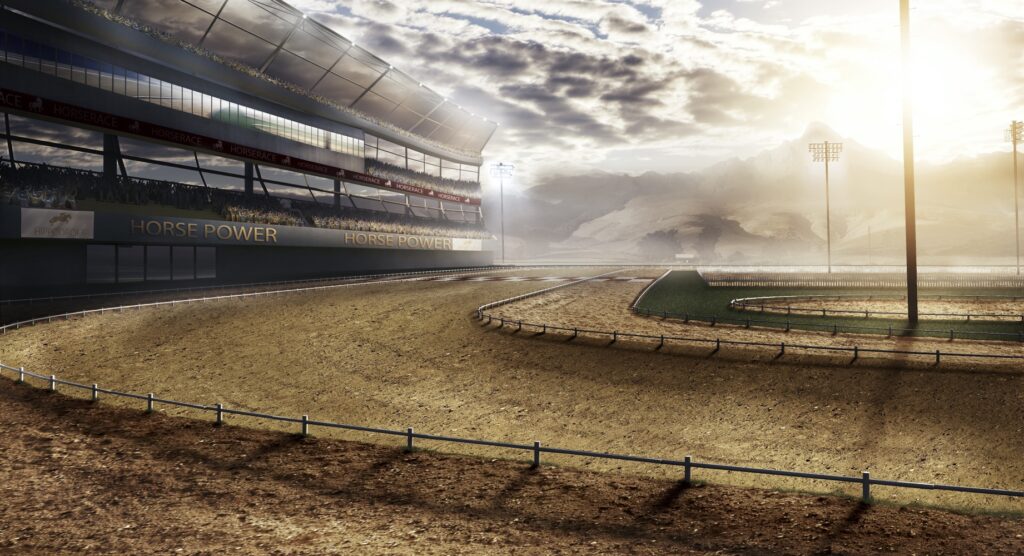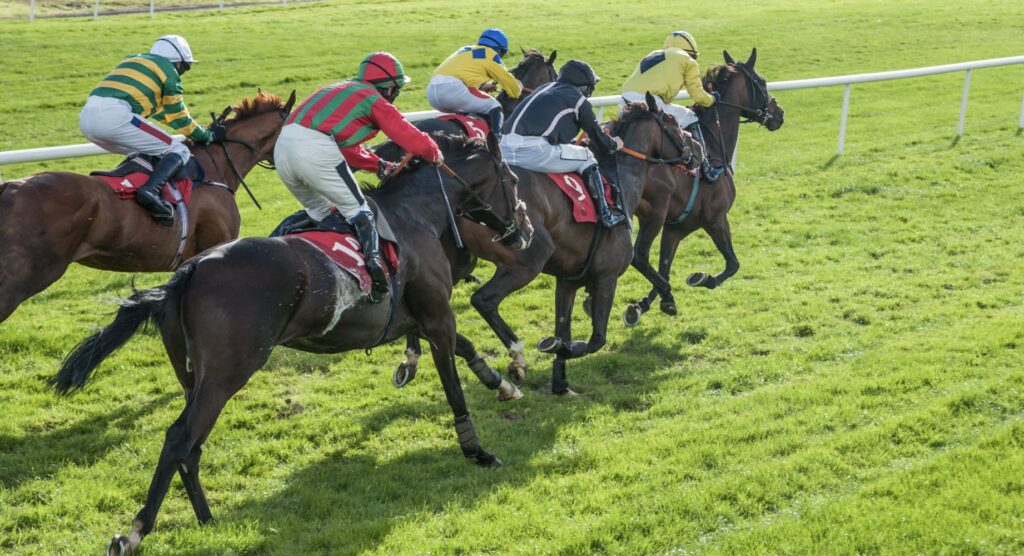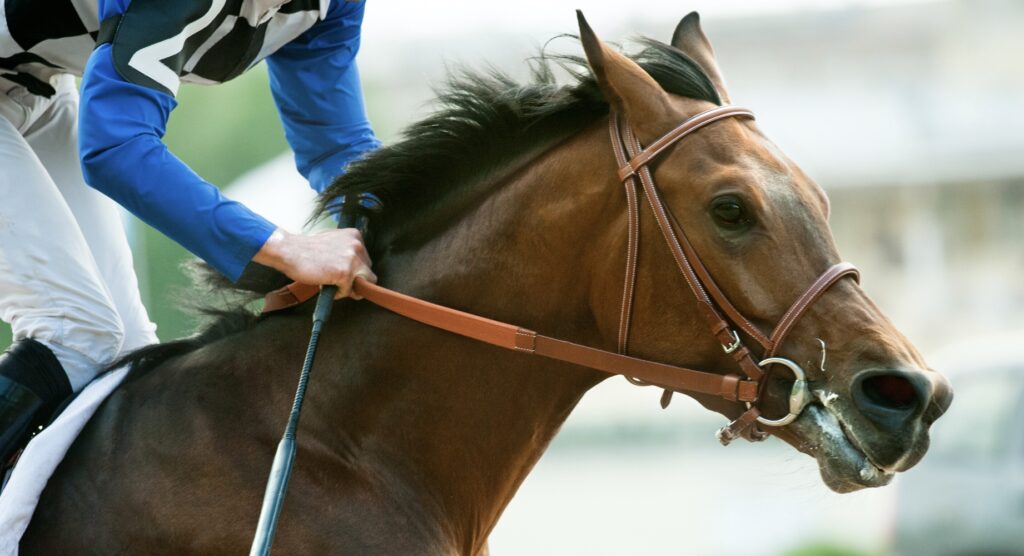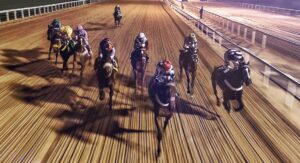Race Types, Class and Handicapping
To the uninitiated, the way that races are put together and the conditions attached to each contest can be somewhat difficult to understand. It takes a while to become au fait with the racing programme and how each type of race works, but spending time gaining a solid grounding in the different race classes and types is beneficial for both enjoyment of the sport, and perhaps more importantly for some, to make money out of it.
Handicaps
In the UK and Ireland, there are several different classifications of horse races in both the National Hunt jumps racing and flat disciplines. Around half of all races run in the UK and Ireland are handicaps.
These races are contests where a horse is allotted a certain weight depending on its perceived ability. The weight is calculated by adding a lead weight to the saddle of the runner.
The theory behind these races is that it makes the contests very competitive, as if the horses carry a weight dependent upon their ability, then they should all be close together when passing the winning line.
In the UK, determining a horse’s rating is the job of the handicapping department at regulatory body – the British Horse Racing Authority (BHA). Each horse in the UK is allocated an official handicap mark known as an official rating and most commonly achieved after three runs (can be gained after two runs if winning one of those starts).
Horses are typically eligible to run in certain races depending on what their handicap mark may be. Flat racing and jumps racing have different scales and a different number of class divisions:
Flat Racing
- Class 1 – Listed Handicaps 96-110+
- Class 2 – Handicaps with 86-100, 91-105 and 96-110 ratings bands.
- Class 3 – Handicaps with 76-90 and 81-95 ratings bands
- Class 4 – Handicaps with 66-80 and 71-85 ratings bands
- Class 5 – Handicaps with 56-70 and 61-75 ratings bands
- Class 6 – Handicaps with 46-60 and 51-65 ratings bands
- Class 7 – Classified Stakes 0-45 (Horses carry the same weight regardless of rating)
2yo’s with handicap ratings can run in nursery contests, which are effectively handicaps for juveniles.
Jumps Racing
- Class 1 – Grade 1, Grade 2, Grade 3 and Listed races
- Class 2 – Open Handicaps and Handicaps 0-140+
- Class 3 – Handicaps with 0-120 and 0-135 ratings bands and Novice Handicaps with the same bands
- Class 4 – Handicaps with 0-100 and 0-115 bands and Novice Handicaps with the same bands
- Class 5 – Handicaps with 0-85 and 0-95 bands and Novice Handicaps with the same bands
- Class 6 – National Hunt Flat Races and Hunter’s Steeplechases. These race are not handicaps.
Horse’s official ratings are revised every week by the BHA. If a horse wins a race and has subsequent entries before the handicapper has the chance to reassess the runner, it is allowed to race under a penalty. The penalty is dictated to by the conditions of the race, but is most commonly 6lbs for flat races and 7lbs for jumps.
When trainers think that the handicapper may increase their horses rating by more than the 6/7lbs, then assuming the horse is sound, connections are likely to run their horse under a penalty.
Horses cannot race in handicap contests where their official rating is above the ceiling for that grade, so a 67 rated horse could not run in a Class 6 (51-65) flat race.
However, horses whose mark is below the minimum required for that race can ran in higher grade races, but they have to carry the minimum weight for that race. This puts them ‘out of the handicap’ as they have to shoulder more weight than their ability indicates they should, rendering the horse at a disadvantage.

Race Types Explained
Here’s an overview of different race types:
Group/Graded Racing
Group/Graded Racing
On the flat, the top racehorses compete in class 1 company which can be Group 1/2/3 or listed races. Under National Hunt rules, the class 1 contests are Grade 1/2/3 or listed races. Listed races can either be stakes races where the horses aren’t handicapped on their perceived ability, or they can be handicaps.
Group 1/2/3 races on the flat are not handicaps and any difference in the weights carried by horses is dependent upon the conditions of the race i.e. age of the horse, has it won a group race before etc. Over jumps, some Grade 3 races are handicaps.
Examples of Group 1 races on the flat include events such as the 1000/2000 Guineas, The Derby and The St Ledger. Under National Hunt rules, the Grade 1 contests are events such as the Cheltenham Gold Cup and Champion Chase. The most famous race in the country, The Grand National, is a handicap.
Sellers/Claimers
Sellers/Claimers
Let’s begin by explaining the difference between sellers and claimers:
- Sellers – In these contests, the horses enter an auction after competing and are sold to the highest bidder.
- Claimers – The trainer/owner attributes a value to their horse. The horse’s weight in the race then corresponds to that value. After the race, individuals are able to put in a claim for the horse at the asking price and if there is more than one bidder, the new owner is drawn randomly.
These races are often contested by horses that have a low level of ability and those with more talent but who are on the downgrade. Sellers and claimers are regularly smattered with runners who should win the contests comfortably based on a relative weight compared to ability.
However, questionable attitudes regularly ensure that the horse who would be the logical winner based on ability, under-perform. After all, the very foundation on which these races are run is to sell or have the horses move on.
Favourites do especially well in sellers, and the market is usually a good indicator or a horse’s chance of success.
Maidens
Maidens
Maiden races are for horses who have never won a race before. These contests are more commonly run on the flat with 2yos and 3yos competing in the embryonic stages of their careers, but can be contested by older horses under National Hunt rules.
Due to the lack of previous form, maidens often bring together horses of contrasting ability who will experience a significant disparity in their success throughout their career. On the flat, horses will typically have 3 runs in maiden company before going handicapping (assuming they don’t win those 3 starts).
Novice Races
Novice Races
Novice races are regularly run over hurdles and chases. These contests allow inexperienced runners to race against others learning their craft.
Weights are typically equal, with allowances made for females and for horses who have previously won a race under similar conditions. Novice races do occur on the flat for two year olds, although there are not many on the racing fixture list.
Other Race Types
Other Race Types
Other race types include conditions and classified contests. These races are not handicaps, so horses do not carry a certain amount of weight depending on their ability. Runners can however carry more weight as penalties for winning a certain type of race or class of contest – it depends on the conditions of the particular event.

How Does Race Class Affect A Horse’s Performance?
The class of race that a horse competes in can have a profound impact upon its chances of success. For instance, certain runners may be extremely successful when running in Class 5 company, but when stepping up to Class 4, they are unable to get their head in front. Theoretically, the horse’s chance should not be compromised by racing in a higher grade, as the handicap system ensures that the runner will carry less weight than if running in a lower grade
Looking at an example of flat racing, a horse rated 75 could either race in a Class 5 (61-75) or a Class 4 contest. The horse would carry 9 stone 7 as a top weight in Class 5 and would carry less in the higher grade, with the exact weight depending on how many higher rated rivals there were.
A tempo which is similar to a lower grade race will put increased emphasis on acceleration at the end of the contest. As the horses are not fully exerting themselves for the whole race, the impact of the weights carried does not fully come into play. In these circumstances, the higher rated runners with better acceleration can leave a class riser behind.
Of course there are the occasional anomalies, such as smaller horses with more fragile constitutions. Carrying a smaller deadweight in a better field is the preferable option to carrying a lumbering heavy weight (which the horse struggles to manage given their frame), in a weaker field.
Assessing horse’s performances in different grades through form research and video research can be very useful. With more exposed horses, the mantra ‘don’t ask a horse to do something it hasn’t before’ can prove a shrewd one to follow. Below, we use Mr Knightley as an example:
Example – Mr Knightley
Jim Boyle’s inmate last raced in 2013. He was rated 73, had 28 starts and had generally raced over 7-8f. He was usually a hold up performer and won 6 races, placing on a further eight occasions. Delving further and assessing Mr Knightley’s record by class we can see:
- Class 4+ – 0/4
- Class 5 – 0/11 with 3 places
- Class 6 – 6/13 with a further 5 places
This horse has a clear preference for racing against Class 6 animals. With just 3 places from 15 starts in Class 5 company or higher, it is evident that Mr Knightley has struggled when upped in grade.
What is interesting is that the horse has an official rating of 73. The highest that a horse can be rated in Class 5 company is 75. Therefore, on handicap ratings, Mr Knightley should be very competitive in Class 5 company and should also be able to hold his own in Class 4 company.
Spotting trends such as these can be useful when horses are moving up and down the grades. A runner may have been underperforming in its recent starts, but has been dropped to a grade where it has performed well in the past.
Obviously bookmakers will be alert to the drop in grade, but may underestimate the impact the difference in quality of opposition has on a horse’s performance.

Final Thoughts
The class and race type should always be taken into consideration when analysing a horse racing. Comparing the conditions of a race in which a horse is running in against its previous outings can give clues and raise questions as to its potential performance on the day. Some horses are versatile across the classes and race types, whilst others demonstrate clear preferences.
As always, research is key to unearthing trends and profitable angles.




